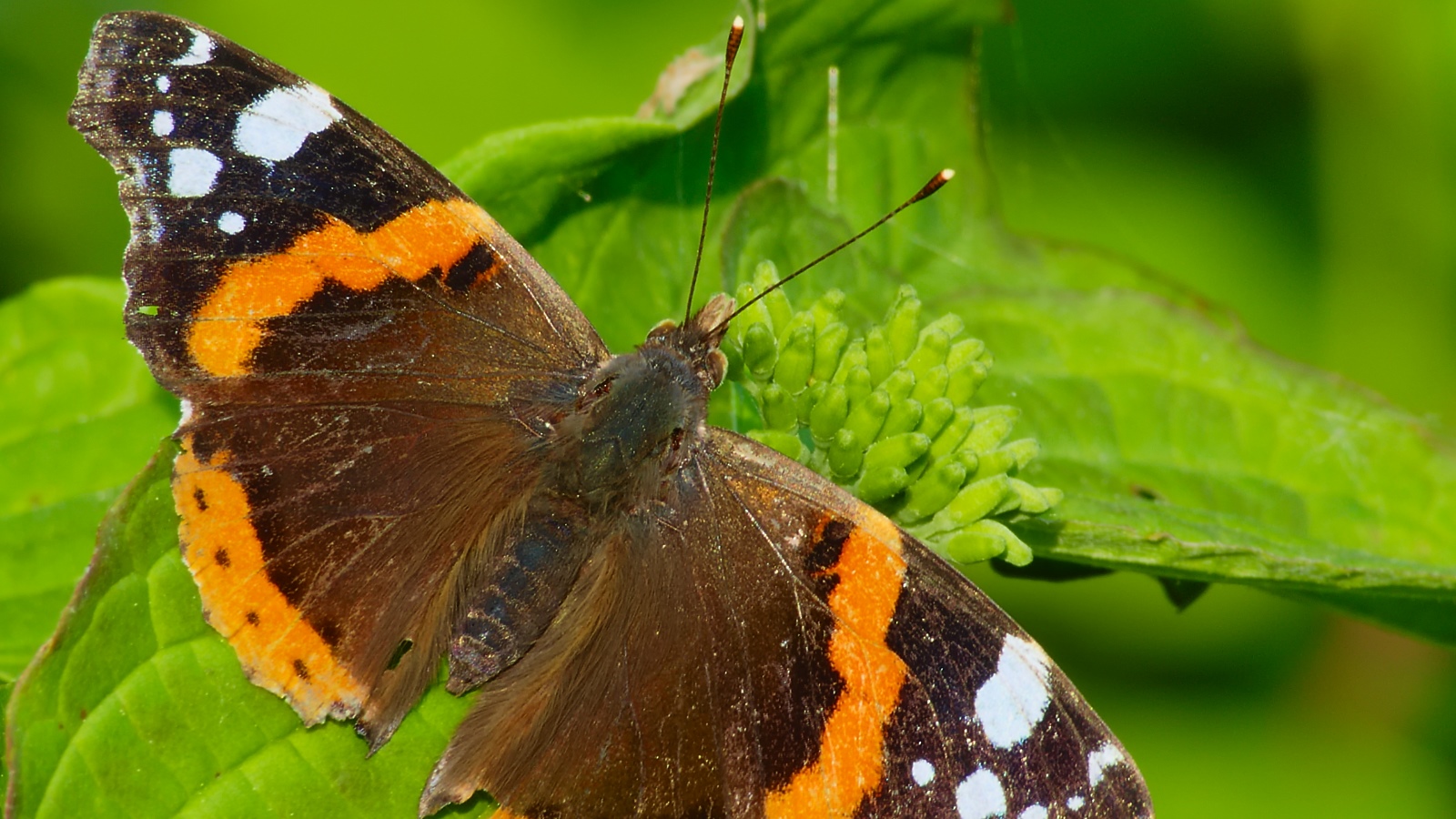Butterflies to discover in the Garden in May and June
A naturalist in the Gulbenkian Garden
At this time of year, many of Portugal’s approximately 130 species of diurnal butterflies are already flying around, looking for a partner to reproduce with. Gardens, vegetable gardens and parks are some of the best places to discover them in cities.
Take a look at their wings. You will see that most butterflies’ wings are much larger than their bodies. And did you know that the wings of these amazing insects are covered with scales?
Here are five butterfly species to try to discover over the next few weeks. How many of these can you find? Look for them where there are flowers, preferably in the late morning and early afternoon and on sunny days.
The large white
Pieris brassicae
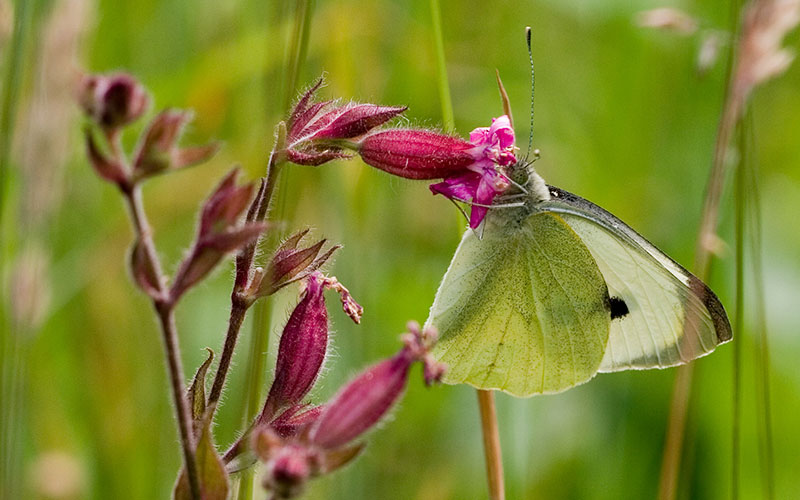
With its whitish wings with tiny black spots, the large white or cabbage butterfly can be seen all year round. As their name implies, the caterpillars of this species feed on cabbages and turnips, and are therefore easy to find in vegetable gardens. As an adult, you can see them in flowered meadows, in open areas and in gardens. This species is found all over Portugal and in many European countries, as well as in North Africa and Asia.
The speckled wood
Pararge aegeria
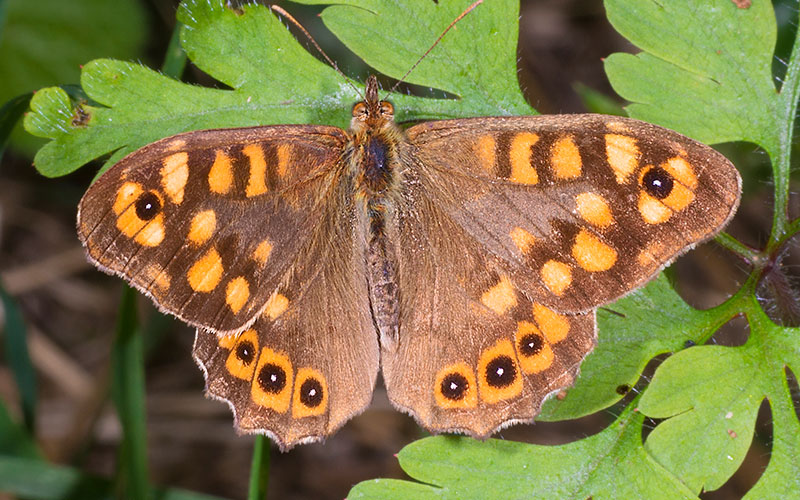
The speckled wood is a restless butterfly and always seems to be flying in a fidgety manner, perhaps because it is a very territorial species and doesn’t like to leave its observation post. It prefers shady places such as dense bushes and forests, where it disguises itself in the shadows with its brown and orange coloured wings, but it is also easy to see in gardens. It is common in Portugal and can be found in many European forests.
The western dappled white
Euchloe crameri
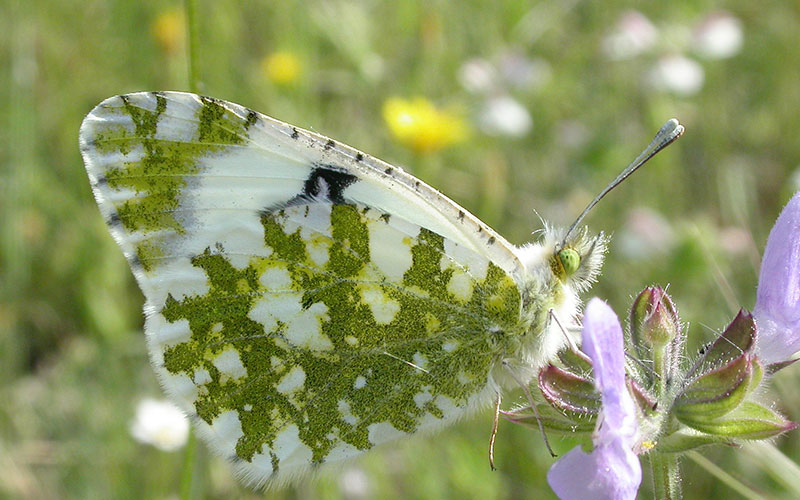
The western dappled white spends much of the year in the chrysalis state, but between April and May you can find it almost anywhere, including urban gardens. It is especially associated with southern European countries such as Portugal, Spain, France and Italy.
Red Admiral
Vanessa atalanta
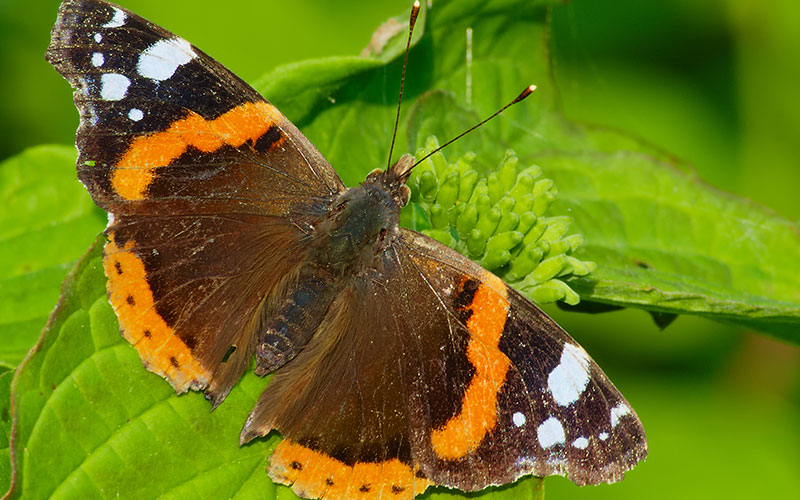
Everyone loves the vivid colours of the red admiral, which is one of the easiest butterflies to identify and a common visitor to our gardens. Around this time of year, look for its rapid flight as it patrols its small territory and wards off possible intruders. The best time to admire this beautiful butterfly is when it rests with spread wings on the ground or on vegetation. One little hint: this species really likes sun-drenched clumps of nettles.
The southern scarce swallowtail
Iphiclides feisthamelii

The southern scarce swallowtail is a large, showy butterfly that is very common in Portugal. Light-toned and dark-striped, with blue spots on the edge of its wings, this is a common butterfly throughout the country. This excellent species is sure to awaken fascination and interest in the world of colourful butterflies.
